MM Online:
As HDB link-up vilified, researchers say country has much to learn from Singapore’s holistic approach to public housing
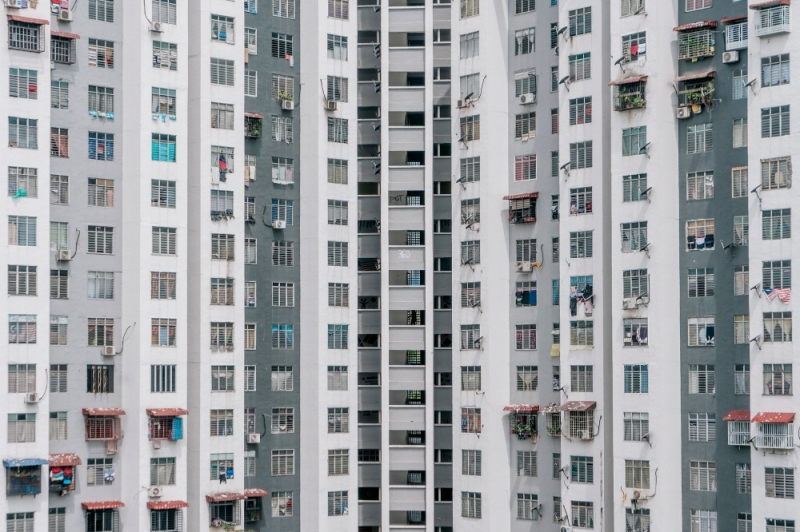
General view of PPR Seri Pantai at Pantai Dalam in Kuala Lumpur January 29, 2023. — Picture by Shafwan Zaidon
Thursday, 02 Feb 2023 7:00 AM MYT
KUALA LUMPUR, Feb 2 — Several researchers have called into question the recent narrative demonising Putrajaya’s attempt to consult Singapore’s Housing and Development Board (HDB), clarifying that the republic is well-known for its successful public housing model.
They told Malay Mail Malaysia could learn to implement effective public housing development, with independent urban researcher Aziff Azuddin pointing to Singapore’s holistic urban planning that takes into account mobility, housing, work and access where HDBs are a thoughtful aspect of that highly-controlled ecosystem.
“As urban public housing, Singapore HDBs are a good standard to follow and Malaysia can certainly learn a lot from it,” he said in a recent interview.
The data analyst and former policy researcher said right now, urban planners in Malaysia seem to work in different silos rather than planning holistically.
“Anyone experiencing trying to walk and find a place to live in Klang Valley would find it evident. The best example is how by design, access to anywhere is incredibly difficult if you don’t own a car or motorcycle,” he said.
He said that in Singapore, residents can live their whole lives without owning a private vehicle because housing is planned alongside transport, and commercial or work access.
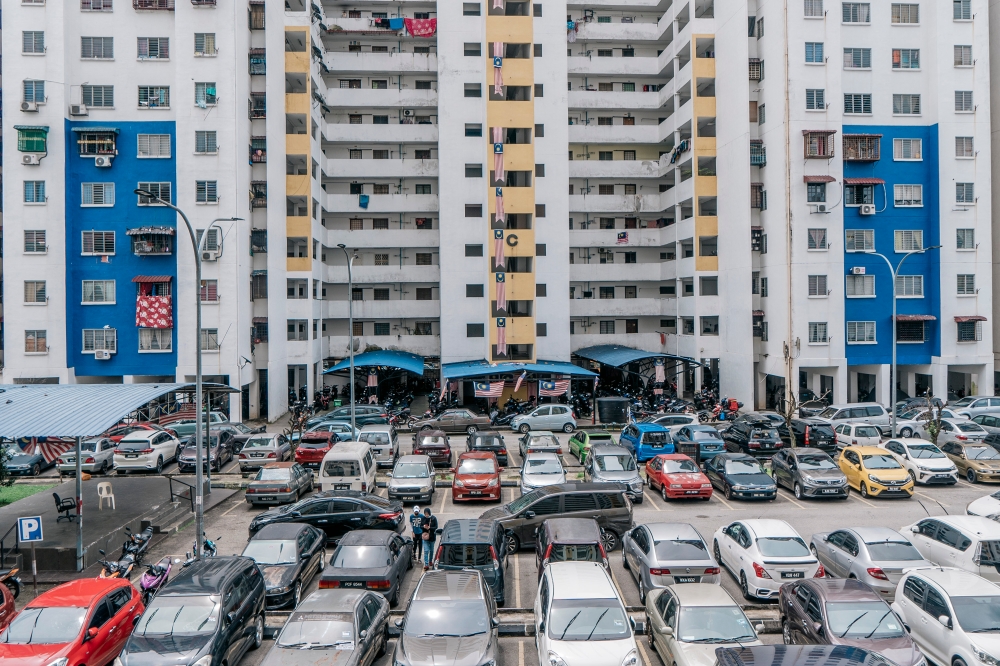
General view of PPR Pantai Ria in Kuala Lumpur January 29, 2023. — Picture by Shafwan Zaidon
Additionally, Aziff explained that the HDB model works well in Singapore because land space is limited and the government has to be resourceful with urban planning.
He said Singapore had the foresight to consider important aspects of community living for their HDBs.
“So you see HDB spaces also being used for community activities, alongside it being very accessible for transit and mobility,” he said.
He pointed out that HDBs are public housing with a 99-year lease so that ownership opportunities can be given to others while its pricing is accessible to all.
Institute of Strategic and International Studies Malaysia (ISIS) economic analyst, Qarrem Kassim, concurred that Malaysia needs to review its public housing policy to make it more community-based and wholesome.
He noted that the HDB housing in Singapore is well-kept and in most cases, looks like luxurious condominiums in Malaysia and is equipped with necessary amenities and infrastructure.
Qarrem said the maintenance of the public housing schemes in Malaysia needs to be improved and stakeholders’ engagement is important for the residents to have a sense of ownership so that they will chip in to ensure the housing area is kept clean.
“The government needs to plan out public housing projects strategically and ensure it is well-maintained,” he said.
He said currently, many public housing projects are located far from the city centre and this only worsened the quality of life for its residents.
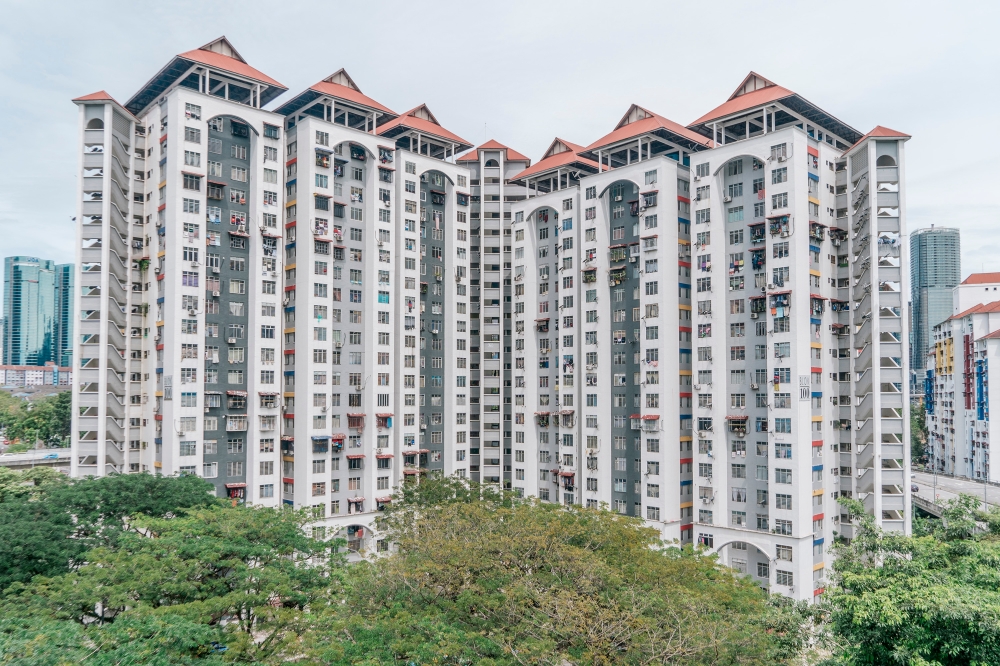
General view of PPR Seri Pantai at Pantai Dalam in Kuala Lumpur January 29, 2023. — Picture by Shafwan Zaidon
“Public housing projects in Malaysia are often built in remote areas and not easily accessible, such as PR1MA which contributed towards the property overhang in Selangor,” he said, referring to the initiative formed under the 1Malaysia Public Housing Act 2012.
He said public housing projects, other than strategically placed, needed better connectivity such as trains and LRTs, not only buses.
“Otherwise, those working in the city centre will need their own transport to travel for work which incurs more costs for them,” he said.
He also pointed out that the allocation of public housing should be inclusive and based on income level instead of ethnic-based.
“We must remember that it should be for the B40 and the B40 does not only consist of Malays, there are also Chinese, Indians and other races in the B40 group,” he said.
He said the Pakatan Harapan federal government should not only look at this issue on an ad-hoc basis but holistically as the issue of property ownership also involved the country’s economy and its citizens’ income level.
“The average Malaysian income is still very low so we are still poor in many ways,” he said.
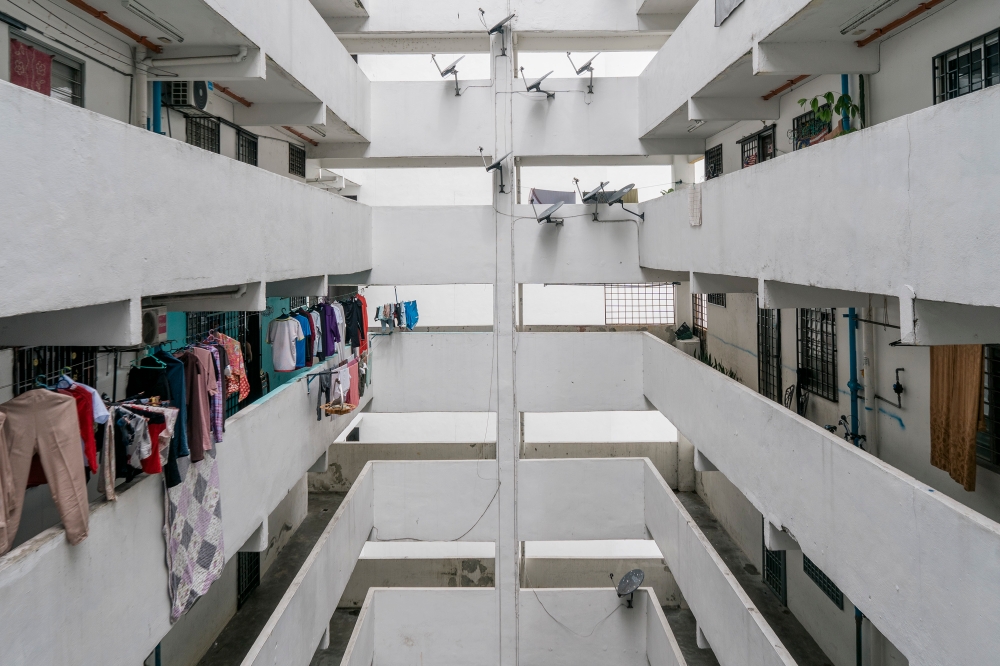
General view of PPR Pantai Ria in Kuala Lumpur January 29, 2023. — Picture by Shafwan Zaidon
National House Buyers Association (HBA) secretary-general Datuk Chang Kim Loong agreed that Singapore’s public housing model is a good example for Malaysia to emulate.
“Learn from a proven record, for example, Singapore HDB which is the best in the world, from what I read,” he said.
He said the HDB concept can be replicated here with the right town planning or building approval process and with the political will of the government.
Chang said there are now a lot of abandoned and problematic housing projects in Malaysia and the government has to ensure that the B40 group of buyers do not fall victim to such projects.
“The government should adopt the Built Then Sell (BTS) 10:90 concept to ensure that there is no abandonment, especially in the B40 category,” he said.
He said the government did not clarify which aspect of the HDB model that they are looking at and hoped that the ministry would engage with the HBA and stakeholders on this.
“The Minister should engage with us to be transparent on the actual modelling of HDB that our country wishes to emulate,” he said.
Aziff also asked where the government wished to apply the HDB model as Malaysia has a lot more land space compared to Singapore.
“The HDB model, which was designed to maximise limited land, may need a lot of adaptation,” he said.
He echoed Qarrem’s concerns that the country’s current public and low-cost housing model did not take into account important aspects such as accessibility and mobility, proximity to public transit or access to work opportunities.
“In Malaysia, we’re very much concerned with the land ownership which limits where we can build public initiatives like this,” he said.
Aziff also lambasted disinformation by right-wing Islamist and pro-Malay groups who claimed this is an attempt to push urban Malays to the fringes, calling it “fearmongering”,
“The HDB model would benefit urban Malays, especially those among the B40 and working class,” he said.
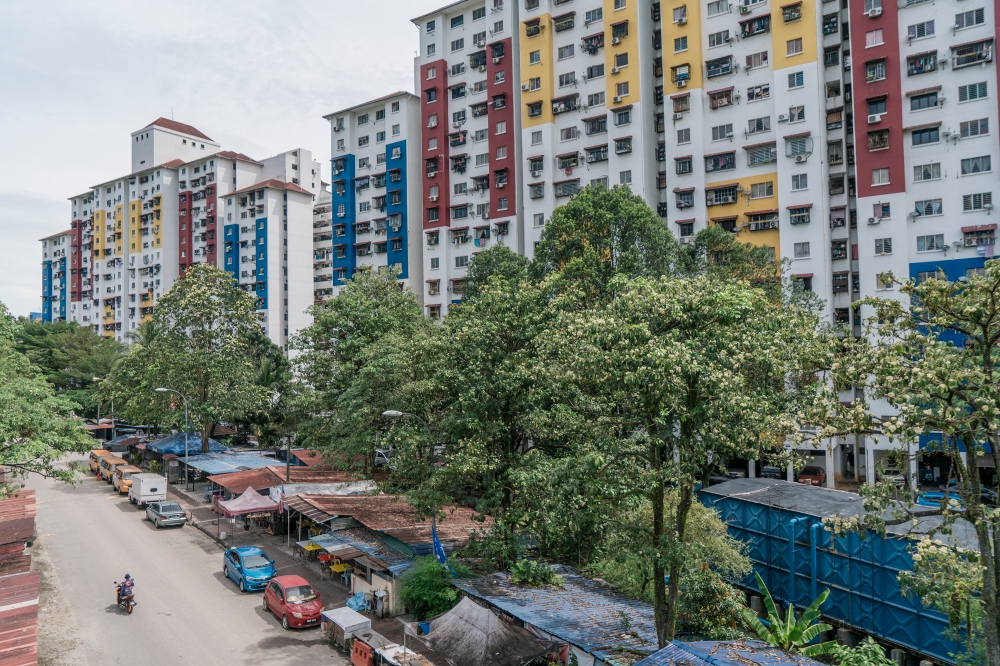
General view of PPR Kampung Limau at Pantai Dalam in Kuala Lumpur January 29, 2023. — Picture by Shafwan Zaidon
Qarrem said these accusations are a way for the politicians, especially from the opposition Perikatan Nasional, to appeal to the young Malay demography.
“It is their way of winning over young Malay voters so the PH government needs to look at this issue carefully,” he said.
Chang said these claims are a non-issue and pointed out that there is a minimum 30 per cent quota for Bumiputera for all housing projects that must be complied with by all developers.
“Some states (quota for Bumiputera) can be as high as 50 per cent or more on top of the Bumiputera discounts,” he added.
He said these accusations were merely a way for some parties to appear to champion the Bumiputera.
Parti Pribumi Bersatu Malaysia’s Datuk Wan Saiful Wan Jan recently accused the state government of adopting a public housing scheme to change the demography of the island.
He alleged that due to the DAP-led state government’s housing policy, the percentage of property ownership among Malays in the state has remained low at only 27 per cent while 55 per cent of properties in Penang are owned by the ethnic Chinese.
Wan Saiful’s attack is the latest from PN’s attempt to undermine the PH federal government’s effort to learn from Singapore’s public housing formula by claiming that the move would destroy Malay villages and reduce the proportion of Malays living in public housing.
The narrative has since been repeated and amplified by Bersatu’s partner in PN, the Islamist party PAS, and other Islamist and pro-Malay groups.
This comes as Local Government Development Minister Nga Kor Ming said that the Singaporean government had given its approval for the country’s HDB flat contractors to visit his ministry next month to share their knowledge on building affordable housing.
Thursday, 02 Feb 2023 7:00 AM MYT
KUALA LUMPUR, Feb 2 — Several researchers have called into question the recent narrative demonising Putrajaya’s attempt to consult Singapore’s Housing and Development Board (HDB), clarifying that the republic is well-known for its successful public housing model.
They told Malay Mail Malaysia could learn to implement effective public housing development, with independent urban researcher Aziff Azuddin pointing to Singapore’s holistic urban planning that takes into account mobility, housing, work and access where HDBs are a thoughtful aspect of that highly-controlled ecosystem.
“As urban public housing, Singapore HDBs are a good standard to follow and Malaysia can certainly learn a lot from it,” he said in a recent interview.
The data analyst and former policy researcher said right now, urban planners in Malaysia seem to work in different silos rather than planning holistically.
“Anyone experiencing trying to walk and find a place to live in Klang Valley would find it evident. The best example is how by design, access to anywhere is incredibly difficult if you don’t own a car or motorcycle,” he said.
He said that in Singapore, residents can live their whole lives without owning a private vehicle because housing is planned alongside transport, and commercial or work access.

General view of PPR Pantai Ria in Kuala Lumpur January 29, 2023. — Picture by Shafwan Zaidon
Additionally, Aziff explained that the HDB model works well in Singapore because land space is limited and the government has to be resourceful with urban planning.
He said Singapore had the foresight to consider important aspects of community living for their HDBs.
“So you see HDB spaces also being used for community activities, alongside it being very accessible for transit and mobility,” he said.
He pointed out that HDBs are public housing with a 99-year lease so that ownership opportunities can be given to others while its pricing is accessible to all.
Institute of Strategic and International Studies Malaysia (ISIS) economic analyst, Qarrem Kassim, concurred that Malaysia needs to review its public housing policy to make it more community-based and wholesome.
He noted that the HDB housing in Singapore is well-kept and in most cases, looks like luxurious condominiums in Malaysia and is equipped with necessary amenities and infrastructure.
Qarrem said the maintenance of the public housing schemes in Malaysia needs to be improved and stakeholders’ engagement is important for the residents to have a sense of ownership so that they will chip in to ensure the housing area is kept clean.
“The government needs to plan out public housing projects strategically and ensure it is well-maintained,” he said.
He said currently, many public housing projects are located far from the city centre and this only worsened the quality of life for its residents.

General view of PPR Seri Pantai at Pantai Dalam in Kuala Lumpur January 29, 2023. — Picture by Shafwan Zaidon
“Public housing projects in Malaysia are often built in remote areas and not easily accessible, such as PR1MA which contributed towards the property overhang in Selangor,” he said, referring to the initiative formed under the 1Malaysia Public Housing Act 2012.
He said public housing projects, other than strategically placed, needed better connectivity such as trains and LRTs, not only buses.
“Otherwise, those working in the city centre will need their own transport to travel for work which incurs more costs for them,” he said.
He also pointed out that the allocation of public housing should be inclusive and based on income level instead of ethnic-based.
“We must remember that it should be for the B40 and the B40 does not only consist of Malays, there are also Chinese, Indians and other races in the B40 group,” he said.
He said the Pakatan Harapan federal government should not only look at this issue on an ad-hoc basis but holistically as the issue of property ownership also involved the country’s economy and its citizens’ income level.
“The average Malaysian income is still very low so we are still poor in many ways,” he said.

General view of PPR Pantai Ria in Kuala Lumpur January 29, 2023. — Picture by Shafwan Zaidon
National House Buyers Association (HBA) secretary-general Datuk Chang Kim Loong agreed that Singapore’s public housing model is a good example for Malaysia to emulate.
“Learn from a proven record, for example, Singapore HDB which is the best in the world, from what I read,” he said.
He said the HDB concept can be replicated here with the right town planning or building approval process and with the political will of the government.
Chang said there are now a lot of abandoned and problematic housing projects in Malaysia and the government has to ensure that the B40 group of buyers do not fall victim to such projects.
“The government should adopt the Built Then Sell (BTS) 10:90 concept to ensure that there is no abandonment, especially in the B40 category,” he said.
He said the government did not clarify which aspect of the HDB model that they are looking at and hoped that the ministry would engage with the HBA and stakeholders on this.
“The Minister should engage with us to be transparent on the actual modelling of HDB that our country wishes to emulate,” he said.
Aziff also asked where the government wished to apply the HDB model as Malaysia has a lot more land space compared to Singapore.
“The HDB model, which was designed to maximise limited land, may need a lot of adaptation,” he said.
He echoed Qarrem’s concerns that the country’s current public and low-cost housing model did not take into account important aspects such as accessibility and mobility, proximity to public transit or access to work opportunities.
“In Malaysia, we’re very much concerned with the land ownership which limits where we can build public initiatives like this,” he said.
Aziff also lambasted disinformation by right-wing Islamist and pro-Malay groups who claimed this is an attempt to push urban Malays to the fringes, calling it “fearmongering”,
“The HDB model would benefit urban Malays, especially those among the B40 and working class,” he said.

General view of PPR Kampung Limau at Pantai Dalam in Kuala Lumpur January 29, 2023. — Picture by Shafwan Zaidon
Qarrem said these accusations are a way for the politicians, especially from the opposition Perikatan Nasional, to appeal to the young Malay demography.
“It is their way of winning over young Malay voters so the PH government needs to look at this issue carefully,” he said.
Chang said these claims are a non-issue and pointed out that there is a minimum 30 per cent quota for Bumiputera for all housing projects that must be complied with by all developers.
“Some states (quota for Bumiputera) can be as high as 50 per cent or more on top of the Bumiputera discounts,” he added.
He said these accusations were merely a way for some parties to appear to champion the Bumiputera.
Parti Pribumi Bersatu Malaysia’s Datuk Wan Saiful Wan Jan recently accused the state government of adopting a public housing scheme to change the demography of the island.
He alleged that due to the DAP-led state government’s housing policy, the percentage of property ownership among Malays in the state has remained low at only 27 per cent while 55 per cent of properties in Penang are owned by the ethnic Chinese.
Wan Saiful’s attack is the latest from PN’s attempt to undermine the PH federal government’s effort to learn from Singapore’s public housing formula by claiming that the move would destroy Malay villages and reduce the proportion of Malays living in public housing.
The narrative has since been repeated and amplified by Bersatu’s partner in PN, the Islamist party PAS, and other Islamist and pro-Malay groups.
This comes as Local Government Development Minister Nga Kor Ming said that the Singaporean government had given its approval for the country’s HDB flat contractors to visit his ministry next month to share their knowledge on building affordable housing.
Even a good example for Malaysia to learn and adapt from has been racialised.
ReplyDeleteTo think if this cheap housing learned from Singapire is successful, how many of the B40, including Malays will gain.
Yet idiots like that Wan Saifool made a whole thing a race issue. And they claim to care for the rakyat!